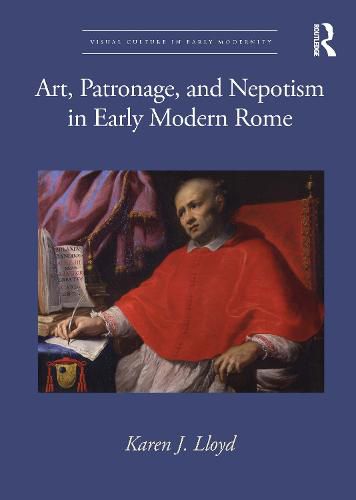Readings Newsletter
Become a Readings Member to make your shopping experience even easier.
Sign in or sign up for free!
You’re not far away from qualifying for FREE standard shipping within Australia
You’ve qualified for FREE standard shipping within Australia
The cart is loading…






Drawing on rich archival research and focusing on works by leading artists including Guido Reni and Gian Lorenzo Bernini, Karen J. Lloyd demonstrates that cardinal nephews in seventeenth-century Rome - those nephews who were raised to the cardinalate as princes of the Church - used the arts to cultivate more than splendid social status.
Through politically savvy frescos and emotionally evocative displays of paintings, sculptures, and curiosities, cardinal nephews aimed to define nepotism as good Catholic rule. Their commissions took advantage of their unique position close to the pope, embedding the defense of their role into the physical fabric of authority, from the storied vaults of the Vatican Palace to the sensuous garden villas that fused business and pleasure in the Eternal City. This book uncovers how cardinal nephews crafted a seductively potent dialogue on the nature of power, fuelling the development of innovative visual forms that championed themselves as the indispensable heart of papal politics.
The book will be of interest to scholars working in art history, early modern studies, religious history, and political history.
$9.00 standard shipping within Australia
FREE standard shipping within Australia for orders over $100.00
Express & International shipping calculated at checkout
Drawing on rich archival research and focusing on works by leading artists including Guido Reni and Gian Lorenzo Bernini, Karen J. Lloyd demonstrates that cardinal nephews in seventeenth-century Rome - those nephews who were raised to the cardinalate as princes of the Church - used the arts to cultivate more than splendid social status.
Through politically savvy frescos and emotionally evocative displays of paintings, sculptures, and curiosities, cardinal nephews aimed to define nepotism as good Catholic rule. Their commissions took advantage of their unique position close to the pope, embedding the defense of their role into the physical fabric of authority, from the storied vaults of the Vatican Palace to the sensuous garden villas that fused business and pleasure in the Eternal City. This book uncovers how cardinal nephews crafted a seductively potent dialogue on the nature of power, fuelling the development of innovative visual forms that championed themselves as the indispensable heart of papal politics.
The book will be of interest to scholars working in art history, early modern studies, religious history, and political history.